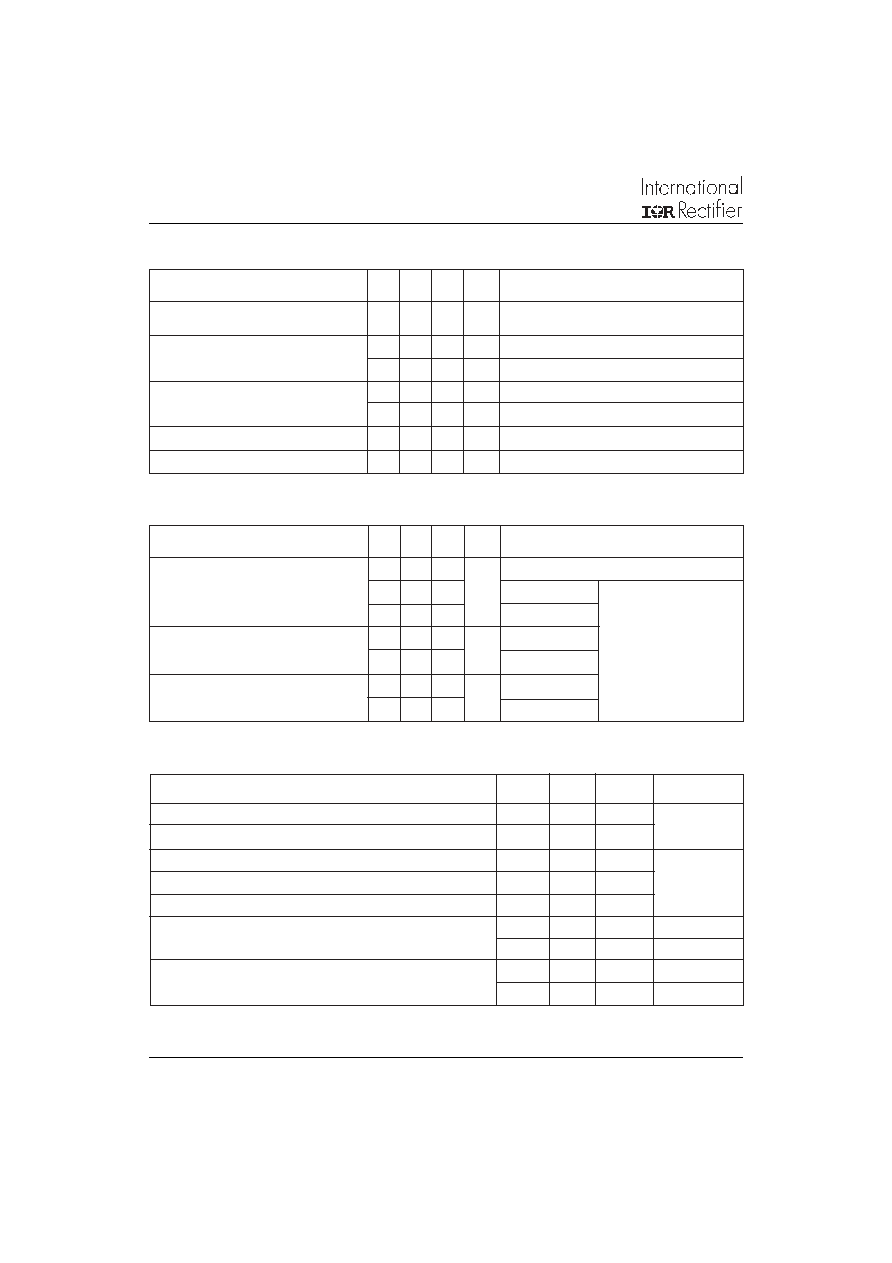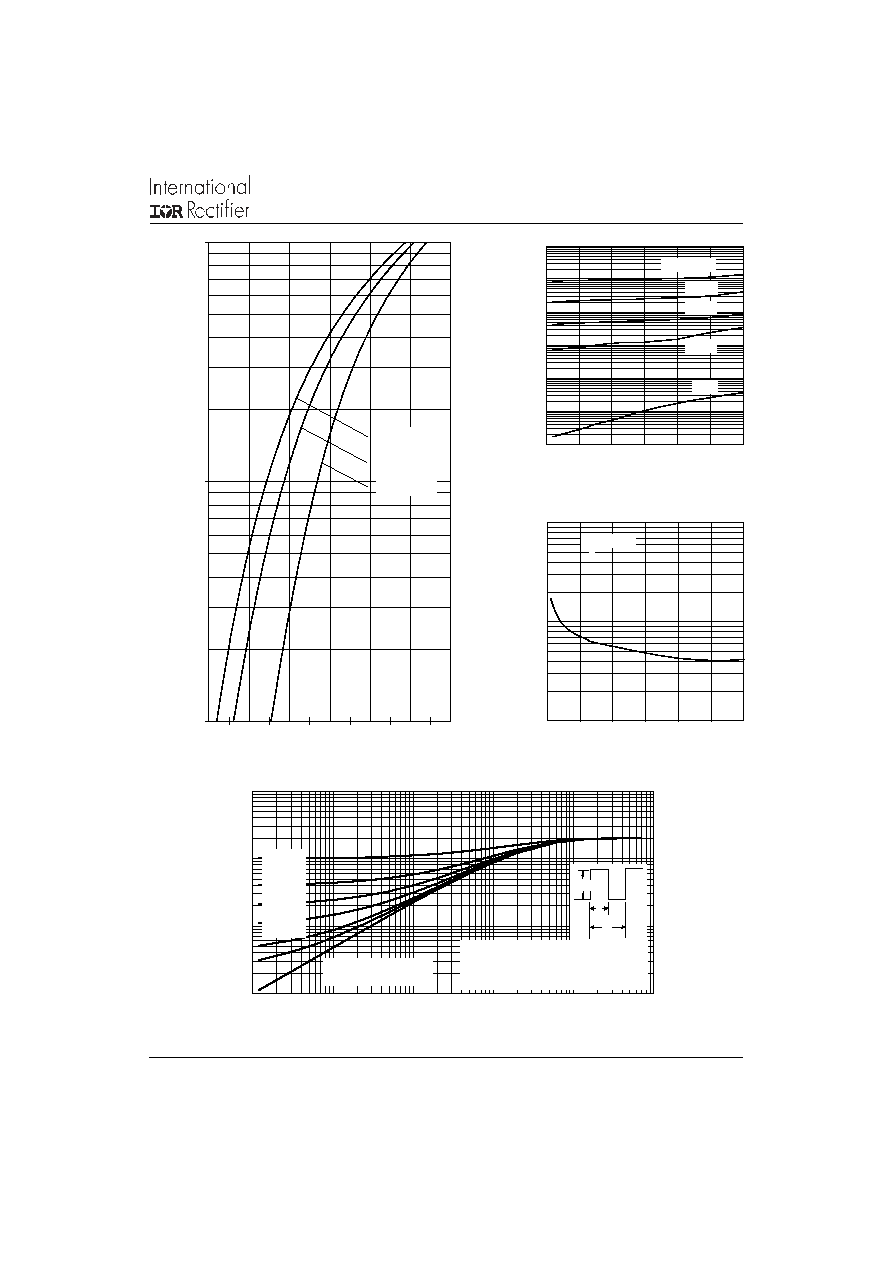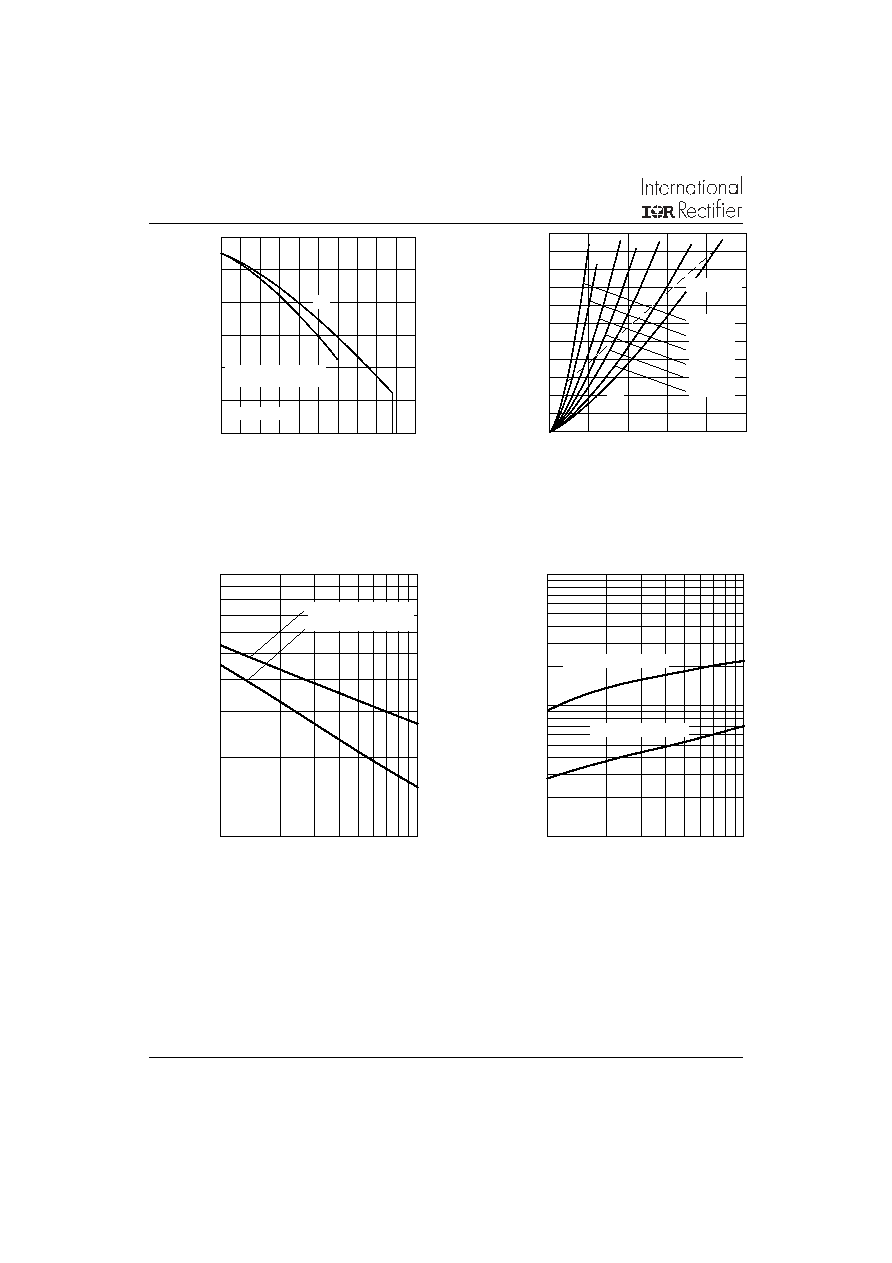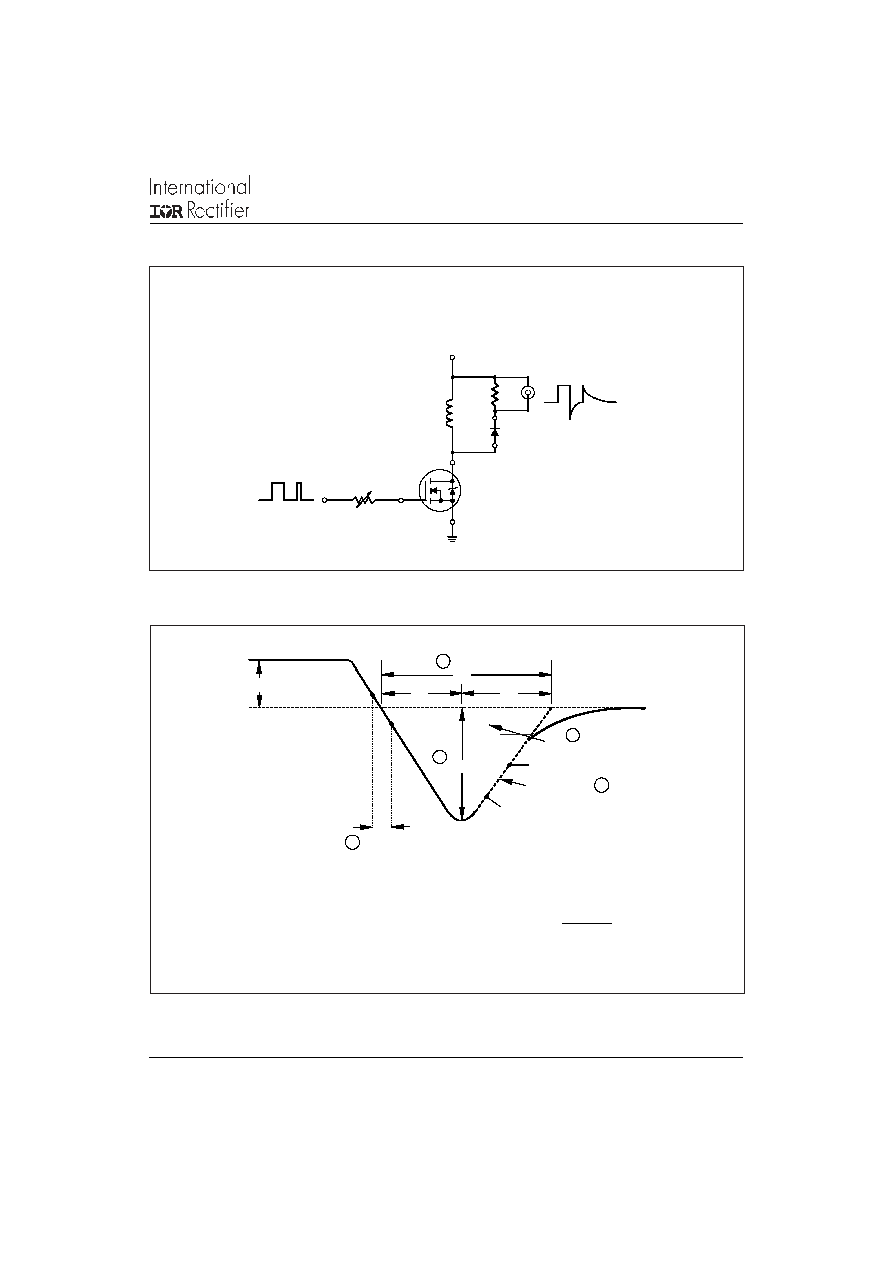 | –≠–ª–µ–∫—Ç—Ä–æ–Ω–Ω—ã–π –∫–æ–º–ø–æ–Ω–µ–Ω—Ç: 15ETH03S | –°–∫–∞—á–∞—Ç—å:  PDF PDF  ZIP ZIP |

1
15ETH03
TO-220AC
Case Styles
15ETH03S
D
2
PAK
15ETH03-1
TO-262
15ETH03
15ETH03S
15ETH03-1
Bulletin PD-20031 rev. C 11/03
t
rr
= 40ns
I
F(AV)
= 15Amp
V
R
= 300V
∑ Ultrafast Recovery Time
∑ Low Forward Voltage Drop
∑ Low Leakage Current
∑ 175∞C Operating Junction Temperature
Features
Description/ Applications
Absolute Maximum Ratings
Ultrafast Rectifier
International Rectifier's 300V series are the state of the art Ultrafast recovery rectifiers designed with optimized
performance of forward voltage drop and Ultrafast recovery time.
The planar structure and the platinum doped life time control guarantee the best overall performance, ruggedness
and reliability characteristics.
These devices are intended for use in the output rectification stage of SMPS, UPS, DC-DC converters as well as
freewheeling diodes in low voltage inverters and chopper motor drives.
Their extremely optimized stored charge and low recovery current minimize the switching losses and reduce over
dissipation in the switching element and snubbers.
V
RRM
Repetitive Peak Reverse Voltage
300
V
I
F(AV)
Average Rectified Forward Current
@ T
C
= 142∞C
15
A
I
FSM
Non Repetitive Peak Surge Current
@ T
J
= 25∞C
140
T
J
,
T
STG
Operating Junction and Storage Temperatures
- 65 to 175
∞C
Parameters
Max
Units
www.irf.com

15ETH03, 15ETH03S, 15ETH03-1
Bulletin PD-20031 rev. C 11/03
2
www.irf.com
V
BR
,
V
r
Breakdown Voltage,
300
-
-
V
I
R
= 100µA
Blocking Voltage
V
F
Forward Voltage
-
1.05 1.25
V
I
F
= 15A, T
J
= 25∞C
-
0.85 1.00
V
I
F
= 15A, T
J
= 125∞C
I
R
Reverse Leakage Current
-
0.05
40
µA
V
R
= V
R
Rated
-
12
400
µA
T
J
= 125∞C, V
R
= V
R
Rated
C
T
Junction Capacitance
-
45
-
pF
V
R
= 300V
L
S
Series Inductance
-
8
-
nH
.
Electrical Characteristics @ T
J
= 25∞C (unless otherwise specified)
Parameters
Min Typ Max Units Test Conditions
Measured lead to lead 5mm from package body
t
rr
Reverse Recovery Time
-
-
40
ns
I
F
= 1.0A, di
F
/dt = 50A/µs, V
R
= 30V
-
32
-
T
J
= 25∞C
45
-
T
J
= 125∞C
I
RRM
Peak Recovery Current
-
2.4
-
A
T
J
= 25∞C
-
6.1
-
T
J
= 125∞C
Q
rr
Reverse Recovery Charge
-
38
-
nC
T
J
= 25∞C
-
137
-
T
J
= 125∞C
Dynamic Recovery Characteristics @ T
J
= 25∞C (unless otherwise specified)
I
F
= 15A
di
F
/dt = -200A/µs
V
R
= 200V
Parameters
Min Typ Max Units Test Conditions
Parameters
Min
Typ
Max
Units
T
J
Max. Junction Temperature Range
- 65
-
175
∞C
T
Stg
Max. Storage Temperature Range
- 65
-
175
R
thJC
Thermal Resistance, Junction to Case
Per Leg
-
1.02
2.0
∞C/W
R
thJA
Thermal Resistance, Junction to Ambient
Per Leg
-
-
70
R
thCS
Thermal Resistance, Case to Heatsink
-
0.2
-
Wt
Weight
-
2.0
-
g
-
0.07
-
(oz)
Mounting Torque
6.0
-
12
Kg-cm
5.0
-
10
lbf.in
Thermal - Mechanical Characteristics
Typical Socket Mount
Mounting Surface, Flat, Smooth and Greased

Bulletin PD-20031 rev. C 11/03
3
15ETH03, 15ETH03S, 15ETH03-1
www.irf.com
Fig. 2 - Typical Values Of Reverse Current
Vs. Reverse Voltage
Fig. 1 - Typical Forward Voltage Drop Characteristics
Reverse Voltage - V
R
(V)
Fig. 3 - Typical Junction Capacitance
Vs. Reverse Voltage
Forward Voltage Drop - V
FM
(V)
Instantaneous Forward Current - I
F
(A)
Reverse Current - I
R
(µA)
Reverse Voltage - V
R
(V)
Junction Capacitance - C
T
(pF)
Fig. 4 - Max. Thermal Impedance Z
thJC
Characteristics
t
1
, Rectangular Pulse Duration (Seconds)
Thermal Impedance Z
thJC
(∞C/W)
1
10
100
0.4
0.6
0.8
1
1.2
1.4
1.6
Tj = 175∞C
Tj = 125∞C
Tj = 25∞C
0.001
0.01
0.1
1
10
100
1000
0
50
100 150 200 250 300
Tj = 175∞C
25∞C
100∞C
125∞C
150∞C
10
100
1000
0
50
100 150 200 250 300
T = 25∞C
J
0.01
0.1
1
10
0.00001
0.0001
0.001
0.01
0.1
1
Single Pulse
(Thermal Resistance)
D = 0.50
D = 0.20
D = 0.10
D = 0.05
D = 0.02
D = 0.01
2
t
1
t
P
DM
Notes:
1. Duty factor D = t1/ t2
.
2. Peak Tj = Pdm x ZthJC + Tc
.

15ETH03, 15ETH03S, 15ETH03-1
Bulletin PD-20031 rev. C 11/03
4
www.irf.com
(3) Formula used: T
C
= T
J
- (Pd + Pd
REV
) x R
thJC
;
Pd = Forward Power Loss = I
F(AV)
x V
FM
@ (I
F(AV)
/
D) (see Fig. 6);
Pd
REV
= Inverse Power Loss = V
R1
x I
R
(1 - D); I
R
@ V
R1
= rated V
R
Fig. 5 - Max. Allowable Case Temperature
Vs. Average Forward Current
Fig. 6 - Forward Power Loss Characteristics
Average Power Loss ( Watts )
trr ( ns )
Qrr ( nC )
Allowable Case Temperature (∞C)
Fig. 8 - Typical Stored Charge vs. di
F
/dt
Fig. 7 - Typical Reverse Recovery vs. di
F
/dt
di
F
/dt (A/µs )
di
F
/dt (A/µs )
0
2
4
6
8
10
12
14
16
18
20
22
0
5
10
15
20
25
RMS Limit
D = 0.01
D = 0.02
D = 0.05
D = 0.10
D = 0.20
D = 0.50
DC
10
100
100
1000
If = 15A, Tj = 25∞C
If = 15A, Tj = 125∞C
120
130
140
150
160
170
180
0
5
10
15
20
25
DC
Square wave (D = 0.50)
Rated Vr applied
see note (3)
Average Forward Current - I
F(AV)
(A)
Average Forward Current - I
F(AV)
(A)
10
100
1000
100
1000
If = 15A, Tj = 25∞C
If = 15A, Tj = 125∞C

Bulletin PD-20031 rev. C 11/03
5
15ETH03, 15ETH03S, 15ETH03-1
www.irf.com
Fig. 10 - Reverse Recovery Waveform and Definitions
IRFP250
D.U.T.
L = 70µH
V = 200V
R
0.01
G
D
S
dif/dt
ADJUST
t
a
t
b
t
rr
Q
rr
I
F
I
RRM
I
RRM
0.5
di(rec)M/dt
0.75 I
RRM
5
4
3
2
0
1
di /dt
f
Fig. 9 - Reverse Recovery Parameter Test Circuit
Reverse Recovery Circuit
di
F
/dt
di
F
/dt
4. Q
rr
- Area under curve defined by t
rr
and I
RRM
5. di (rec) M / dt - Peak rate of change of
current during t b portion of t rr
1. di
F
/dt - Rate of change of current through zero
crossing
2. I
RRM
- Peak reverse recovery current
3. t
rr
- Reverse recovery time measured from zero
crossing point of negative going I
F
to point where
a line passing through 0.75 I
RRM
and 0.50 I
RRM
extrapolated to zero current
Q rr =
t rr x I RRM
2




